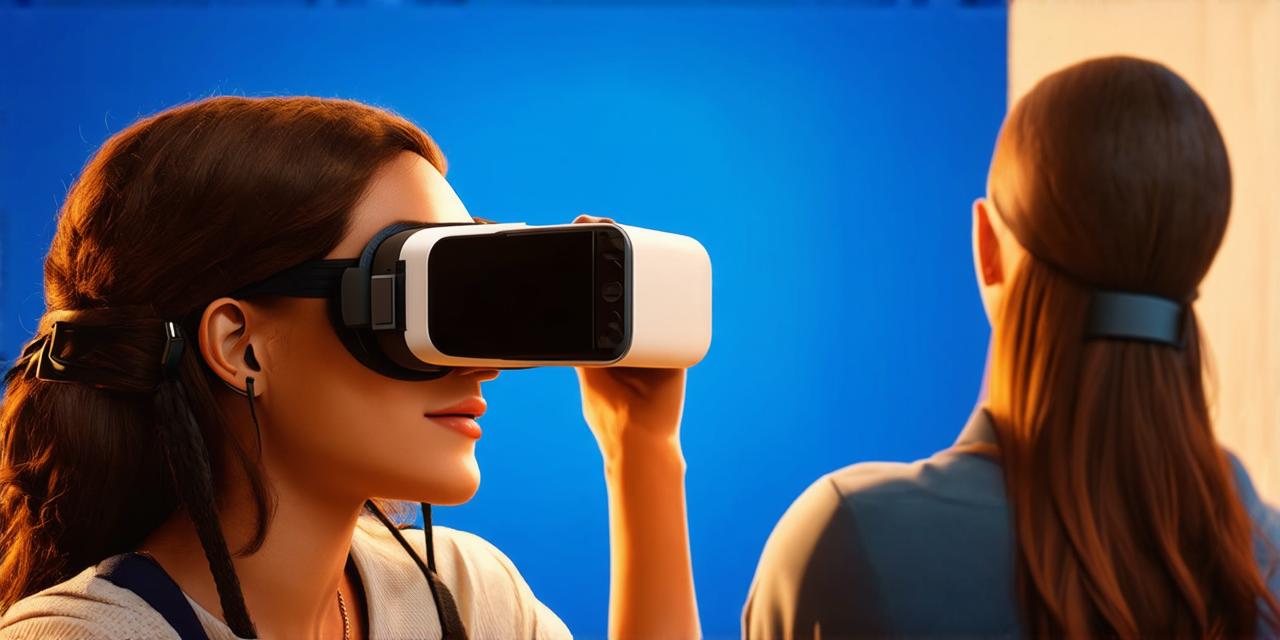Introduction:
Virtual reality (VR) is a rapidly growing technology that has captured the imagination of people around the world. With Google’s introduction of the Cardboard VR headset, developers have an accessible and affordable way to create immersive VR experiences.
What is Google Cardboard?
Google Cardboard is a low-cost VR headset made from simple materials like cardboard and lenses. It was first introduced in 2014 as part of Google’s Project Cardboard initiative, which aimed to make virtual reality accessible to everyone. The headset can be easily assembled using a smartphone and can be used with a variety of VR apps and games.
The Google Cardboard experience:
When worn, the Google Cardboard headset provides users with a 360-degree view of their surroundings, similar to what they would see in real life. The headset uses sensors on the smartphone to track movement and adjust the image accordingly, providing a smooth and immersive VR experience.
One of the unique features of Google Cardboard is its affordability.
The headset can be assembled using simple materials and costs around $20-$30, making it an accessible option for developers looking to create VR experiences on a budget. Additionally, the headset is compatible with a wide range of smartphones, including both iOS and Android devices.
Google Cardboard can be used for a variety of purposes, including education, entertainment, and training.
For example, in the healthcare industry, Google Cardboard has been used to simulate surgical procedures, allowing doctors and students to practice in a safe and controlled environment. In the education sector, the headset has been used to create virtual field trips and immersive learning experiences.
Case study: Google Expeditions
Google Expeditions is a free VR app that allows users to explore the world from the comfort of their own homes. The app uses Google Cardboard or other compatible VR headsets to provide users with a 360-degree view of famous landmarks, museums, and cultural sites. The app has been used in schools and classrooms to enhance student learning and engagement.
One example of how Google Expeditions can be used is in a geography class.
Students can use the app to virtually visit different countries and learn about their culture, history, and landmarks. This provides a more engaging and immersive learning experience than traditional textbook-based methods.
Google Cardboard VR development:
Developing for Google Cardboard requires some knowledge of Unity and C programming. However, there are also many resources available online to help developers get started. The Unity Asset Store has a variety of templates and plugins that can be used to create VR experiences quickly and easily.
In addition to Unity, there are other tools and platforms available for developing Google Cardboard VR experiences.
For example, the A-Frame framework is an open-source platform that allows developers to create VR experiences using HTML and JavaScript. There are also many third-party libraries and APIs available to help developers build more advanced features into their VR experiences.
Conclusion:
Google Cardboard provides developers with a powerful tool for creating immersive and engaging virtual reality experiences. The headset’s affordability and compatibility with a wide range of smartphones make it an accessible option for developers looking to create VR experiences on a budget. With the right tools and resources, anyone can develop a Google Cardboard VR experience that engages users in new and innovative ways.
FAQs:
Q: What is the difference between Google Cardboard and other VR headsets?
A: Google Cardboard is a low-cost and accessible option for creating VR experiences, while other headsets may be more expensive and require more technical expertise to use.
Q: Can Google Cardboard be used for enterprise purposes?
A: Yes, Google Cardboard can be used in a variety of industries, including healthcare, education, and training.
